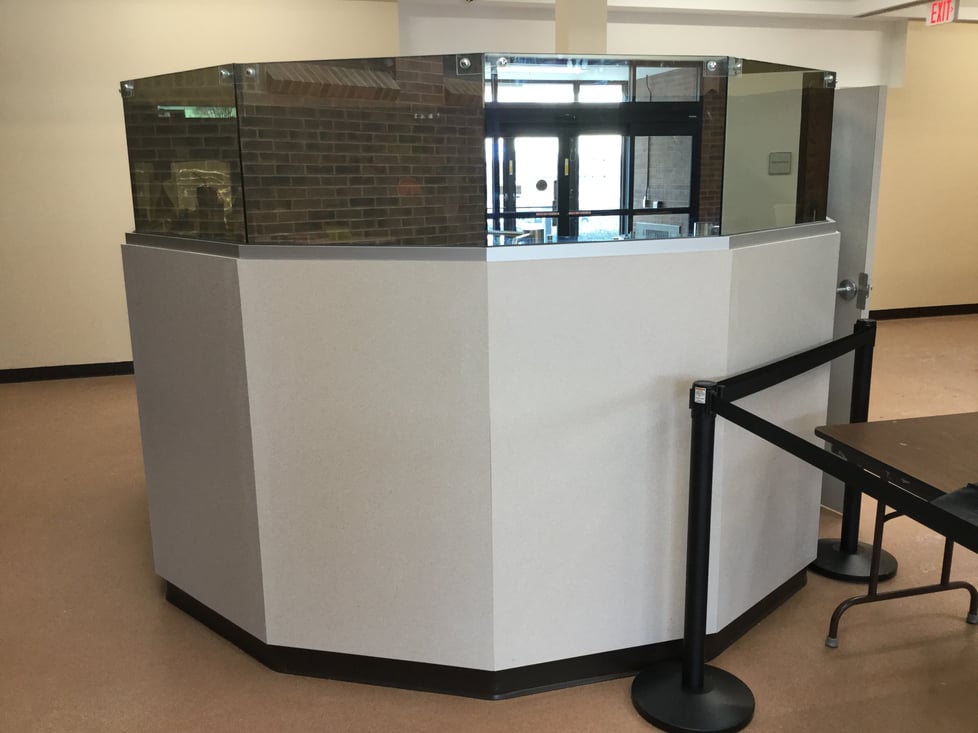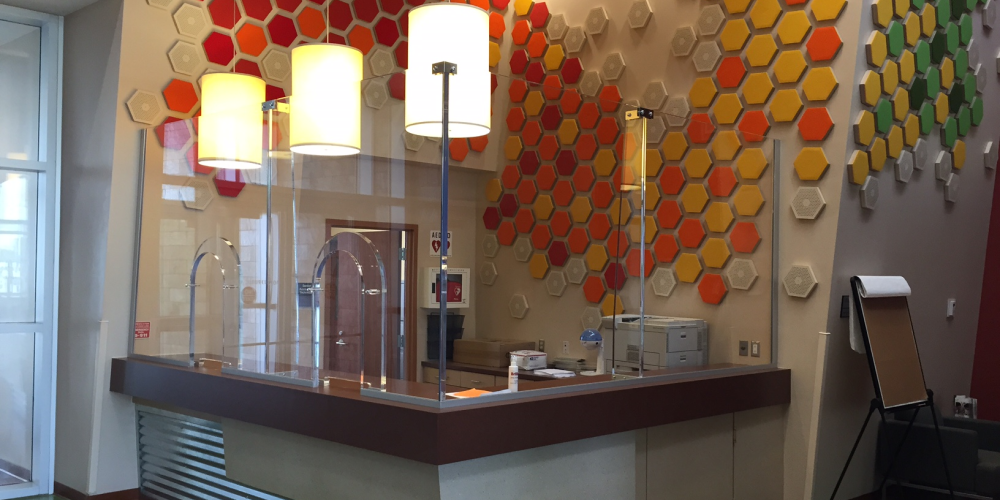According to the most recent data from the US Bureau of Labor Statistics, there are more than 37,000 workplace attacks each year. That number keeps increasing, even through periods when violent crime overall was on the decline in the United States. In general, the motivations for workplace attacks are as varied as the workplaces themselves. But in corporate offices and facilities, Total Security Solutions CEO Jim Richards is finding that "[the] violence has become extremely personal, extremely focused."
This has profound implications for corporate office physical security. An increasing number of large companies are now enhancing security in their facilities—not just for white-collar workers in c-suites, but for workers at every level.
Targeted Violence Calls for Layered Security Solutions
TSS finds taking a "systems" approach to corporate security demands separately considering the unique aspects of
- Corporate office physical security
- Distribution center security
- Data center security
When doing so, companies are advised to adopt an "All Hazards" mindset, similar to the one promoted by the Department of Homeland Security. Such an approach asks three fundamental questions:
- What are the hazards to security and safety this organization faces?
- Where are their vulnerabilities?
- What's the impact of a hazard finding a vulnerability?
TSS CEO Jim Richards has found that “as companies are thinking more about employee health and well-being, we’re also seeing increased interest in layered security solutions that protect a wider group of employees. Thinking about all the reasons that place and these people might be targeted, and thinking in layers, to protect the people working there, and stop the people who want to get in."
Protecting workers is more challenging in cases of targeted violence. In a bank or retail robbery, the attacker has every reason to avoid firing their gun, because any disturbance increases their likelihood of failure and prosecution. But in most cases of workplace violence, if someone steps into an office building holding a gun, Jim notes, “they are there to shoot up the place. Violence is their goal, not a tool they are using to meet some other goal. What are you trying to stop? What are they coming in here to do? In a retail setting, you can rely on ballistic glazing being a deterrent, because money is the goal. Potential robbers see that barrier and decide to rob an easier target. It rarely gets shot. You can't be as sure of that with corporate office physical security, because that violence is targeted.”
Corporate Security Best Practices
Corporate offices, manufacturing facilities, distribution centers, data centers, and other workplaces pose unique security challenges. Most workplaces are designed to make it as easy as possible to move around the facility or get people and products in and out of the building. This makes it extremely challenging to secure these facilities without disrupting operations.
Generally speaking, any corporate security solutions will tend to include level 3 ballistic materials. These are windows, doors, and fiberglass panels rated to stop multiple shots from any type of handgun.
"In higher-end corporate environments," Jim adds, "we will see some level 4 and 5 requirements now." Level 4 and 5 barriers are designed to stop high-powered hunting and assault rifles. "But most of what we do for corporate office physical security and their data and distribution centers, 80% of it is level 3."
While most retail settings use monolithic acrylic for their ballistic windows, corporate environments almost always want either LP-1250 (for interior applications) or glass-clad polycarbonate (also called GCP, in this case used for exterior applications). Both of these are laminated glazings, available in many different make-ups (including various tints, low-E coatings, thermally insulated configurations, and so on). In both cases, the glazing has a ballistic rating (to stop bullets) and a forced-entry or blast-rating (helpful in situations where there are concerns about the potential of break-ins, vandalism, protests, civil unrest, etc.)
Corporate Office Physical Security
In most cases, corporate office physical security primarily focuses on the reception area. This is already their "first line of defense" for intercepting unhappy customers and preventing interruptions in the workday. The addition of a ballistic security barrier makes that unpleasant reality safer and more comfortable for office staff.
Enhancing corporate office physical security starts with the reception counter and surrounding walls (where necessary), which will be reinforced with bullet-resistant fiberglass. On top of the counter, the reception area is shielded with ballistic glazing. The counter will be further modified to include a document or package passer, and a ballistic door will be added separating the offices themselves from the reception lobby. Most corporate offices will opt for a frameless "all-glass" ballistic door with an electric strike.
Many corporate office physical security renovations now include added security to some spaces within the office. For example, particular offices or conference rooms may have existing windows replaced with ballistic glazing. Some offices also chose to create a designated "safe room" protected by bullet-resistant doors and fiberglass.
Organizations also often decide to secure some of their exterior windows and doors. This will usually be done with GCP. For individual office windows and exterior windows on upper stories, TSS offers a removable backglazing system. This increases security without creating maintenance headaches and can often be installed at a significant cost savings (when compared to fully replacing existing glass windows with ballistically rated glazing).
Distribution Center Security
In contrast to corporate office physical security, distribution center security tends to be less layered and more focused on a secure perimeter with vetted entry.
Just before the pandemic, TSS completed a project securing the regional distribution center for a major national retailer. This facility had suffered a horrible—and seemingly arbitrary—employee-on-employee attack that left four workers dead. This event was traumatic for their employees, necessitating a two-week shutdown during their busiest retail season.
The event spurred a complete transformation in this corporation's approach to security, including almost every element of the workplace: staffing, procedures, practices, and the building itself. They planned a multi-layer physical security retrofit for the distribution center, adding additional cameras, secure fencing, turnstiles, bag screening, metal detectors, and a ballistically secure front entryway guard booth designed and built by TSS. This Level 5 raised guard booth, which included continuous mirrored glazing joined at 150º mitered angles, offered security a continuous 270º view with no blind spots or distortion. It served as the “final layer of security for their facility, and their first line of defense.” This has since become the standard across their distribution centers.

But not every ballistic retrofit at a distribution center is so dramatic.
"Some of these facilities,” Jim notes, “because of how their supply chain works, they need direct access to a port or rail. A lot of that is in older or rougher industrial and urban environments. For their workers' sake, they're forced to secure their facilities.” He recalls a recent installation: “This particular facility, they kept having bullets coming through their back wall, because of whatever activity was going on in the adjacent neighborhood. Obviously, it was nothing intentional. But you have a couple of bullets go through the back wall in your warehouse, even if no one gets hurt, that’s a problem."
Data Center Security
Data center security combines elements of corporate office physical security and of distribution center security. At one time, these would have been considered the "most boring" place in any organization. Now they face threats from violent domestic extremists, who often view them as highly symbolic "soft targets" for their rage about larger cultural issues that feel entirely inaccessible and immune from criticism.
For example, Seth Aaron Pendley was recently sentenced to 10 years in prison for plotting to attack data centers in late 2021. Pendley was at the Capitol on January 6 and brought a sawed-off assault rifle to Washington that day. Soon after leaving the city, he began plotting to bomb data centers, targeting an Amazon facility in Virginia. In addition to being the world’s largest online retailer, Amazon’s web hosting services play a role in 30% of 40% of all web traffic. Pendley believed a successful attack would “kill off about 70% of the internet” and spark mass anti-government violence. He was ultimately arrested after attempting to purchase C4 to use during his planned attack.
Until recently, most data centers relied on "security through obscurity": they were nondescript warehouses located in out-of-the-way places where land and electricity are cheap. "Folks who live and work in these sorts of areas almost always say ‘nothing unexpected ever happens around here,’" Jim notes. "It’s very easy for that way of thinking to drift into a false sense of security. You really need to look at the entire facility, think about all the reasons that place might be targeted, and take a holistic approach. These are big buildings, but they usually aren't big jobs, because they don't have a lot of access points and the building itself is usually block construction, which means there's little need for ballistic fiberglass to reinforce walls."
Get Started with These Free Resources
TSS has created a free Corporate Security Guide (as well as other guides and tip sheets) to help you understand your options and enhance your workplace safety. Have questions or a specific project you want to get started? Reach out to our ballistic security experts when you’re ready.

